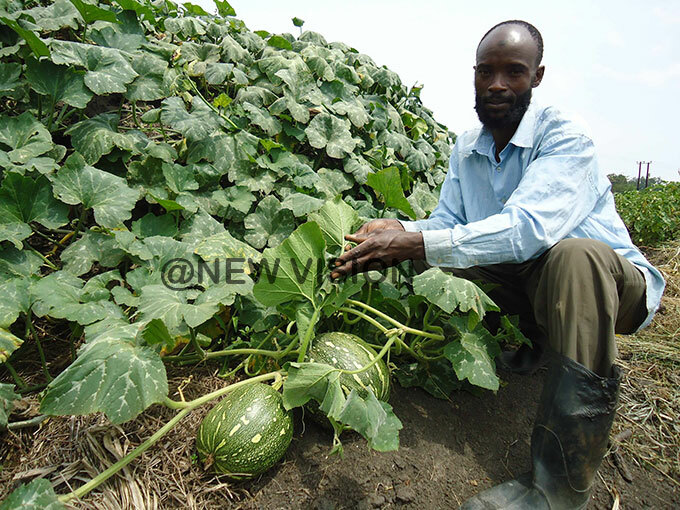Nutritional value in pumpkin, its seeds and leaves
Experts say a pumpkin together with its peeling, leaves, and seeds should be eaten.
NUTRITION HEALTH
Pumpkin is usually cooked before its eaten and many times its seeds are thrown or reserved for planting. Many times the pumpkin leaves are also ignored yet these are very important.
But, experts say a pumpkin together with its peeling, leaves, and seeds should be eaten. Whether row, cooked together with its seeds and peelings, its nutritional values are way too many, and these include
Vitamin A
Jamilu Mpiima a nutritionist says pumpkin is a vegetable which is round and usually orange in color. It gets its color from its antioxidant the beta carotene. After consumption of a pumpkin, the body receives beta carotene an antioxidant found in pumpkins.
The body then converts the antioxidant into vitamin A, which protects the human body against so many diseases like asthma, eye disease, skin diseases, and heart disease among others.

He notes that besides that the vitamin A component in pumpkin helps a lot in digestion and in the long run protects people against colon infections.
Fiber
Mpiima notes that a pumpkin is a strong source of fiber which helps those who enjoy it reduces the risks of catching diabetes and becoming obese. Since its low on calories, it lowers the amount of cholesterol in the body and also reduces the risk of getting high blood pressure or heart-related illnesses.
"This fiber too helps a lot when it comes to dealing with digestion issues, by reducing sugar absorption in the human body and therefore digestion takes place easily," he says.
Vitamin E
Mpiima says pumpkin seeds are very nutritious. They also contain vitamin E which helps a lot when it comes to boasting the body immune system. With a strong immune system, the body is able to fight against infections that arise in areas like the digestive system, blood system, and others.
The leaves
Mwanje says the leaves are very nutritious and contain lots of nutrients like vitamins and minerals. The vitamins include vitamin A, C, Iron, and folic acid among others. These are important for the protection of the body and ensure healthy living.
Different forms of pumpkins can be consumed
Mwanje notes that like any other vegetable, pumpkins can be cooked and served ready to eat by those who love it. It's usually washed and sliced in small pieces and then boiled to be eaten.
Once it's ready for eating, it's important that one eats even the peeling so that they don't miss out on the nutrients in it.
Seeds
Mwanje notes that the seeds are usually picked from the pumpkin, washed, dried under the sun and later roasted for eating, a fact that most people ignore. They just throw away the seeds which is wrong as they miss out on the nutritional values in pumpkin seeds.
He says others have the seeds roasted and eat them as a snack, others go ahead and add them in other types of soups to eat them. These seeds give your sauce a cranky taste.
He notes that some people opt to crash the seeds and form powder out of them and simply add the powder to their source.